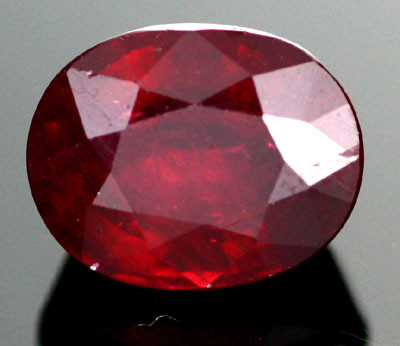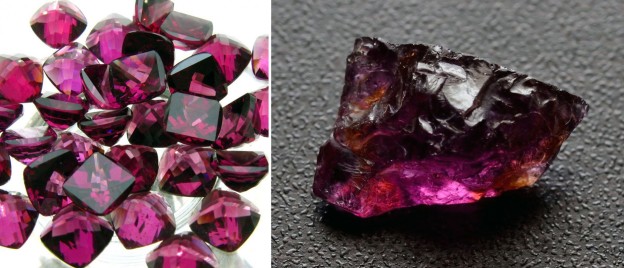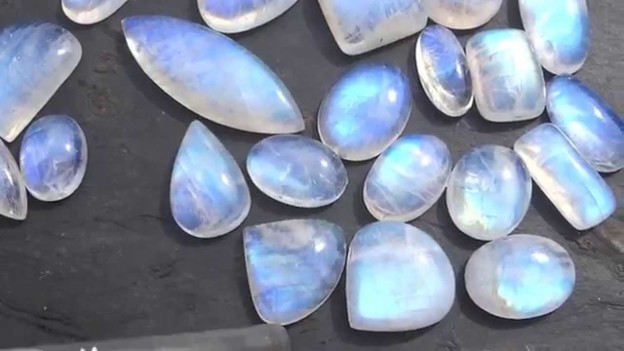Precious Stone Ruby Meaning and Uses | Healing Crystals
Its warm red color is in contrast to the cold blue of blue sapphire. In reality, the ruby, the birthstone of the month of July, belongs to the same mineralogical family as the sapphire: the corundum.
First name
The Ruby derives its name from the Latin “ruber”, red. While many red gemstones continued to be called Ruby until the progress of gemological science during the eighteenth century allowed distinguishing them. During antiquity, Rubies, Garnets, and Spinels were called “carbunculus” (“small coal” in Latin) and were not differentiated from each other. The ancient Greeks knew them as “anthrax” (living coal), since these beautiful red-colored gems, exposed to the sun, showed the color of a burning coal.
Chemical composition of Ruby
The Ruby is next to the Sapphire a colorful variety of Corindón (a crystal of aluminum oxide), which derives its name from the Sanskrit “kuruvinda”. Corundum produces “alchromatic” gems and the remains of mineral elements such as chromium, iron, and titanium, as well as colored centers, color the gems in different shades. Let’s not forget that the sapphires can be found in all the colors of the rainbow. Ruby owes its color to chrome, while brown tones are characterized by having a good amount of iron. The sapphires are also presented in red,(Twilight sapphire, for example) but these tonalities do not fall within the chromatic spectrum assigned to the Ruby. Therefore the red Corundum is called Ruby, and in other varieties of colors, it is called Sapphire. It should be noted that the Ruby is only 80% red because the remaining 20% shows shades of orange, pink, violet or lilac.
Extraction of Ruby
The Rubies of Sri Lanka were known by the ancient Greeks and Romans from the 480th century BC, a fact that would make Sri Lanka the oldest source of extraction of this precious stone. But the “classic” origin of Rubí is the Mogok Valley, in northern central Burma. Today the Rubí is located in Möng Hsu, northeast of Burma. This country thanks to the presence of copies of classic color and strong transparency is considered among the first places of extraction of Ruby in the world and its name has been connected to this gem in such a way that in the past the title of the ancient Burmese kings was from “Señor del Rubí”. Other important sources of Rubí extraction are Afghanistan, Cambodia, China, India, Kenya, Madagascar, Mozambique, Sri Lanka, Tanzania, Thailand, and Vietnam.
Metaphysical Products Suppliers in the UK
History of Ruby
Famous to the Hindus as “ratnaraj”, king of gems, the birthstone of the month of July represents passion, love, and romance. The Ruby has always been the protagonist of legends: the ancient Hindus believed that the Ruby had a fire inside that was able to guarantee long life, while in the Middle Ages it was believed that it had fortune-telling powers and that its color darkened if a misfortune was approaching. Used by the inhabitants of Burma as a talisman against diseases, bad luck, and wounds, the Rubies were known in ancient times as drops of blood from the heart of Mother Earth. In the 19th century, Ralph Waldo Emerson composed a poetry in which he describes Rubí as “frozen drops of wine flowing from the vat of Eden”.
Characteristics of Ruby
The Ruby is one of the most expensive and rare gems among the known Gemstones, much rarer than the Diamond, especially in specimens of intense red and pure. The specimens of superior quality and particularly transparent can be classified with the acronym AAA. Being a dichroic gem (two colors: purple red and orange-red) and therefore pleochroic, the Ruby, even the finest, will never have more than 80% pure red, with secondary drops of orange, pink, purple or Violet.
Clear rubies without visible inclusions are almost unknown. Exactly like the Alejandrita and the Esmeralda in the case of the Rubí chromium is responsible for the color and its inclusions. Belonging to the group of type II gems next to the Sapphire, (that is, gems that are found in nature with some inclusions detectable by the naked eye), the Ruby has normally more inclusions than the Sapphire, but smaller. Subtle microscopic inclusions (called “silk”) in some Rubies can have the effect of more delicately distributing light, thus accentuating its beauty and therefore its value. Most of the specimens show the best of their own beauty if they are observed with natural light or under a source of white light and many of these gems display a strong fluorescence of bright red color.
Variety of Ruby
The Ruby Tanzania AAA fascinates with its unique purity and refinement that does nothing but constantly increase its value, however, it is found only in small dimensions. A cheaper alternative is the Ruby of Madagascar, which with its delicate silk conquers day by day more space in the market for gems. Rubies can show different optical effects: asterism (star effect) or chatoyancy (cat eye effect). Long, parallel needle-like Rutilio inclusions in the Ruby reflect light in a manner reminiscent of a cat’s pupil or of a star in the event that the light is reflected in two or more different directions. A well cut and polished Star Ruby shows a clear and evident star, where the rays are straight and equidistant. The norm foresees a six-pointed star, but in some very rare cases, there are specimens with twelve-ray stars. All-Star Rubies and Cat Eye Rubies are cabochon polished (convex shape, very bright, without facets) and the optical phenomenon is even more evident if the gem is observed under a single source of direct light.
Ruby care
Ruby can be exposed to normal cleaning, steam cleaning, and ultrasonic cleaning. This gem can have fillings and empty spaces, cavities, fissures and therefore is more exposed than others to damages derived from the use of some solvents; therefore it is better to avoid them.



